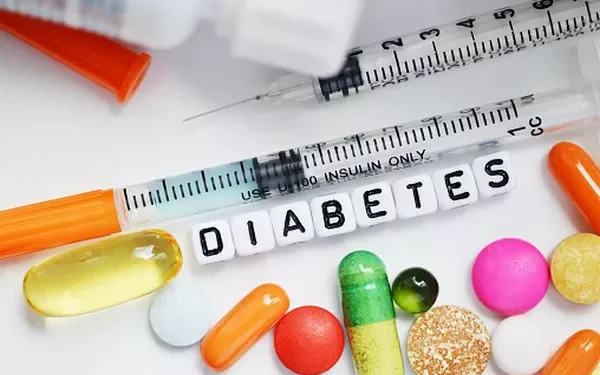Type 2 diabetes is a chronic condition that affects the way the body metabolizes glucose, a crucial source of energy for the body. Managing this condition often requires careful attention to diet, particularly the types of carbohydrates consumed. Not all carbs are created equal, and choosing the right ones can significantly impact blood sugar levels and overall health. This article will explore the best carbohydrates for individuals with type 2 diabetes, focusing on those that provide essential nutrients while maintaining stable blood sugar levels.
Understanding Carbohydrates and Diabetes
Carbohydrates are one of the three main macronutrients, along with proteins and fats. They are the body’s primary source of energy and are found in a wide variety of foods. When consumed, carbohydrates are broken down into glucose, which enters the bloodstream and provides energy to cells. Insulin, a hormone produced by the pancreas, helps cells absorb glucose from the blood.
In type 2 diabetes, the body either resists the effects of insulin or doesn’t produce enough insulin to maintain normal glucose levels. This leads to elevated blood sugar levels, which, if unmanaged, can cause various complications, including cardiovascular disease, nerve damage, and kidney problems.
Types of Carbohydrates
Carbohydrates can be broadly categorized into three types:
Sugars: Simple carbohydrates found naturally in foods like fruits, vegetables, and dairy products, as well as in processed foods like candy, baked goods, and sugary drinks.
Starches: Complex carbohydrates found in foods like bread, rice, pasta, and starchy vegetables (e.g., potatoes, corn, and peas).
Fiber: A type of complex carbohydrate that the body cannot digest. Fiber is found in plant-based foods like fruits, vegetables, legumes, nuts, seeds, and whole grains.
For individuals with type 2 diabetes, the goal is to choose carbohydrates that have a minimal impact on blood sugar levels and provide essential nutrients. This generally means focusing on fiber-rich foods and complex carbohydrates while limiting simple sugars and refined starches.
The Glycemic Index and Glycemic Load
The glycemic index (GI) is a measure of how quickly a carbohydrate-containing food raises blood glucose levels. Foods are ranked on a scale from 0 to 100, with higher values indicating faster and higher spikes in blood sugar. The glycemic load (GL) takes into account both the GI and the amount of carbohydrates in a serving of food, providing a more accurate reflection of a food’s impact on blood sugar levels.
- Low GI: 55 or less
- Medium GI: 56-69
- High GI: 70 or more
Foods with a low GI are generally preferred for managing diabetes because they cause slower, more gradual increases in blood sugar. However, it’s important to consider the overall nutritional profile of a food, not just its GI.
Best Carbs for Type 2 Diabetes
Whole Grains
Whole grains are an excellent source of complex carbohydrates and fiber. Unlike refined grains, which have had the bran and germ removed, whole grains retain all parts of the grain, providing more nutrients and a lower GI. Examples of whole grains include:
Oats: Oats are rich in soluble fiber, particularly beta-glucan, which has been shown to improve insulin sensitivity and lower blood sugar levels. Choose steel-cut or rolled oats over instant oats for a lower GI option.
Quinoa: This grain is high in protein and fiber, making it a great choice for blood sugar control. It also contains all nine essential amino acids, making it a complete protein.
Brown Rice: Unlike white rice, brown rice retains its bran and germ, providing more fiber and nutrients. It has a moderate GI, making it a better choice for managing blood sugar.
Barley: Barley is high in soluble fiber, which can help lower blood sugar and cholesterol levels. It has a low GI and can be used in soups, stews, and salads.
Whole Wheat: Whole wheat products, including bread and pasta, are better choices than their refined counterparts. Look for products labeled “100% whole wheat” to ensure they contain the full grain.
Legumes
Legumes, such as beans, lentils, and chickpeas, are rich in complex carbohydrates, fiber, and protein. They have a low GI and can help stabilize blood sugar levels. Some good options include:
Black Beans: These beans are high in fiber and protein, making them a filling and nutritious choice. They can be added to soups, salads, and stews.
Lentils: Lentils come in various colors, including green, red, and brown, and are all high in fiber and protein. They can be used in soups, stews, and salads.
Chickpeas: Also known as garbanzo beans, chickpeas are versatile and can be used in salads, soups, and as a base for hummus.
Fruits
While fruits contain natural sugars, they also provide essential vitamins, minerals, and fiber. Choosing whole fruits over fruit juices or dried fruits, which can have a higher GI, is important. Some fruits with a lower GI include:
Berries: Blueberries, strawberries, raspberries, and blackberries are high in fiber and antioxidants while having a low GI.
Apples: Apples are high in fiber, particularly pectin, which can help regulate blood sugar levels.
Pears: Pears are another fiber-rich fruit with a low GI, making them a good choice for managing blood sugar.
Cherries: Cherries have a low GI and are rich in antioxidants, which can help reduce inflammation.
Vegetables
Non-starchy vegetables are low in carbohydrates and calories but high in fiber, vitamins, and minerals. They have little impact on blood sugar levels and are an essential part of a diabetes-friendly diet. Some examples include:
Leafy Greens: Spinach, kale, and Swiss chard are low in carbs and high in nutrients like vitamins A, C, and K.
Cruciferous Vegetables: Broccoli, cauliflower, Brussels sprouts, and cabbage are high in fiber and low in carbs.
Peppers: Bell peppers are low in carbs and high in vitamins A and C.
Tomatoes: Tomatoes are low in carbs and provide important nutrients like lycopene, which has antioxidant properties.
Dairy and Alternatives
Dairy products and their alternatives can be part of a balanced diet for type 2 diabetes if chosen carefully. Opt for unsweetened or low-sugar options to avoid unnecessary spikes in blood sugar. Some good choices include:
Greek Yogurt: Greek yogurt is higher in protein and lower in carbohydrates than regular yogurt. Choose plain, unsweetened varieties.
Milk: Skim or low-fat milk can be included in moderation. Unsweetened plant-based milks, such as almond or soy milk, are also good alternatives.
Cottage Cheese: Cottage cheese is high in protein and low in carbs, making it a good option for blood sugar control.
Nuts and Seeds
Nuts and seeds are low in carbohydrates and high in healthy fats, protein, and fiber. They can help stabilize blood sugar levels and provide essential nutrients. Some good options include:
Almonds: Almonds are high in fiber, protein, and healthy fats. They also contain magnesium, which can help improve insulin sensitivity.
Chia Seeds: Chia seeds are high in fiber and omega-3 fatty acids. They can be added to smoothies, yogurt, and oatmeal.
Flaxseeds: Flaxseeds are rich in fiber and omega-3 fatty acids. They can be ground and added to baked goods, smoothies, and oatmeal.
Walnuts: Walnuts are high in healthy fats and have been shown to improve heart health. They can be added to salads, oatmeal, and yogurt.
Whole Grains and Pseudo-Grains
Pseudo-grains, like quinoa and amaranth, are often considered whole grains because of their similar nutritional profiles. They are rich in fiber, protein, and essential nutrients. These can be excellent choices for people with type 2 diabetes:
Buckwheat: Despite its name, buckwheat is not related to wheat and is naturally gluten-free. It is high in fiber and has a low GI.
Amaranth: Amaranth is rich in protein, fiber, and essential nutrients like magnesium and iron. It can be used in porridge, salads, and baked goods.
Farro: Farro is an ancient grain high in fiber and protein. It can be used in salads, soups, and as a side dish.
Meal Planning Tips
Incorporating the right carbohydrates into a diabetes-friendly diet involves more than just choosing low-GI foods. It’s also important to consider portion sizes, meal timing, and overall dietary balance. Here are some tips for planning meals:
Monitor Portion Sizes
Even low-GI foods can cause blood sugar spikes if eaten in large quantities. Using measuring cups, food scales, or visual cues to keep portion sizes in check can help manage blood sugar levels.
Pair Carbs with Protein and Fat
Combining carbohydrates with protein and healthy fats can slow the absorption of glucose into the bloodstream, helping to prevent spikes in blood sugar. For example, pairing an apple with a handful of almonds or adding avocado to a whole-grain toast can create a balanced meal.
Spread Carbs Throughout the Day
Eating smaller, balanced meals and snacks throughout the day can help maintain stable blood sugar levels. This approach prevents large blood sugar fluctuations that can occur with larger, carb-heavy meals.
Stay Hydrated
Drinking plenty of water throughout the day is essential for overall health and can help manage blood sugar levels. Avoid sugary drinks, which can cause rapid increases in blood sugar.
Plan Ahead
Planning meals and snacks in advance can help ensure a balanced diet and prevent the temptation to reach for unhealthy options. Preparing meals at home allows for better control over ingredients and portion sizes.
See also: What is Controlled Type 2 Diabetes?
Conclusion
Managing type 2 diabetes effectively requires careful attention to diet, particularly the types and amounts of carbohydrates consumed. By choosing low-GI, nutrient-dense carbs such as whole grains, legumes, fruits, non-starchy vegetables, dairy, and nuts and seeds, individuals with type 2 diabetes can help maintain stable blood sugar levels and improve overall health.
Incorporating these good carbs into a balanced diet, along with regular physical activity and proper medical management, can significantly enhance the quality of life for those living with type 2 diabetes. Always consult with a healthcare provider or a registered dietitian before making significant changes to your diet to ensure it meets your individual health needs.
Related topics:
What is Intermittent Fasting for Diabetes?



























